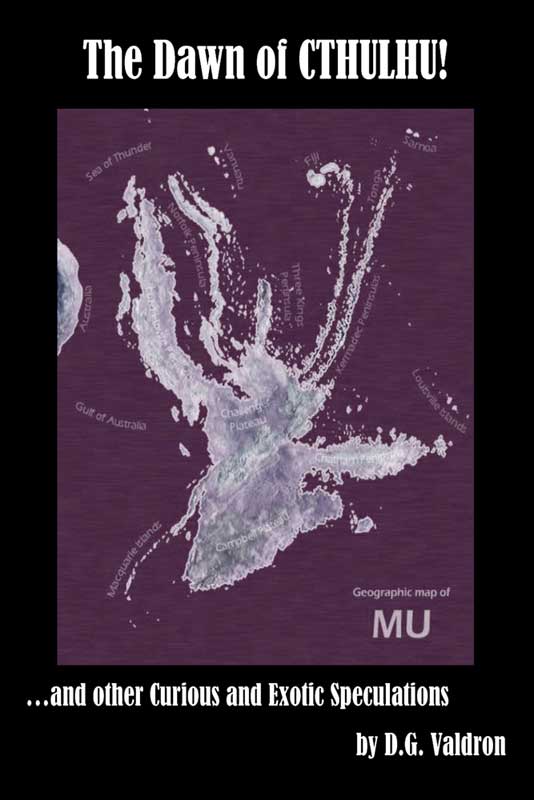Covers are a giant pain in the ass. Seriously.
I love writing. It’s my sane place, it’s my compulsion. I’ll just happily write away, stories, novels, briefs, what have you. There’s nothing like a good piece of writing to soothe the soul.
But then I do this self publishing gig, and it’s not enough to write. You have to edit, revise, arrange, assemble, format. Most of this I can do myself, with varying degrees of skill, or lack thereof?
But covers? Oh geez. What do you do for that?
I’ve been told, and I have reason to believe that the best selling covers are images of shirtless young men with six packs.
Yeah, okay, sure. That’s pretty much every romance novel cover ever! So I guess it appeals to women, and gay men. And come to think of it, that’s every Tarzan, every Doc Savage, every superhero, and a hell of a lot of adventure stories. So women, gay men, teenage boys, etc. It’s got universal appeal.
Maybe that’s what I should be doing for covers?
After that it’s buoyant and defiant young women. Equal parts defiant and buoyant usually. Sometimes frightened and buoyant. Sometimes sultry and buoyant.
But those aren’t really PC now, so never mind.
So what do you do? This is serious. Believe it or not, a major obstacle to my kicking books out into the world is trying to figure out what to do with covers.
Finding an artist. Not an easy thing. Here goes. My first self published book project was my Doctor Who book. Or Who books it turned out, because it ran long, and I divided it in two. I’ve been doing revisions and updates, and it’s about to become a trilogy one of these days.
Now, before I get into this, you’re probably thinking: “A Doctor Who book? What’s there to say about that, there’s been a million Who books? And how would he get the rights?”
There’s a story there, and it does have something to do with covers. Here goes. I had gotten into fan films. Mostly, fan films are terrible and juvenile, they’re great for the people who fool around with them, and often excruciating for everyone else.
But there’s a residue, 10% or 1% or whatever, of people who really put an insane amount of effort into it. These are the people that literally build a full scale replica of the bridge of the Enterprise, the sew costumes, build Daleks and Cybermen, make props, that find locations, and put equivalent effort into writing, directing, filming. Sometimes it’s industry professionals pursuing a private project. Sometime’s it’s just brilliant amateurs. But what you get are amazing films.
There’s all kinds. There’s an insane number of Star Trek and Star Wars fan films, we’re talking thousands. But you can find almost anything out there, Stargate, Zootopia, Triffids, Superheroes, Horror icons, you name it. It’s fascinating, and there’s something wonderful about them, because all these films are labours of love. There’s no commercial aspect, it’s straight up done for the joy of doing it.
Anyway, for me the starter was discovering Barbara Benedetti.

More than thirty years before Jody Whittaker, Barbara Benedetti had starred as the Doctor in a series of four, professional level half hour adventures. She was the first woman to play the Doctor. And when I say professional level, the first adventure was shot on 16 mm film, when the BBC series was making do with video. Barbara and her friends were professional actors. It held up compared to the BBC offerings of the day.
Barbara had been followed by an entire generation of film makers as the BBC series crashed and burned, and then waited long years to reactivate. I discovered Rupert Booth and the Timebase crew, Nick Scovell and Bedlam, stage productions, audio productions, parodies and straight up recreations, animated epics, CGI. You name it. Ample material for a book, or two, or three.
The whole field is obscure, there are so many interesting or great fan films, I literally would love to keep writing about them.
But I digress. I had a book. A terrific book. The word had come out that Jody Whittaker was going to be the first woman Doctor, and I thought it would be terrific to tell the world about Barbara Benedetti and her successors.
I just needed a cover.
Preferably one that wouldn’t intrude on the BBC’s copyrights and expose me to legal liability.
I had an idea! How about instead of an iconic blue police box, the central image was a red British phone booth, recognizable and iconic in it’s own right, and in public domain. And it would be partially painted blue, as if someone was trying to turn it into a makeshift Tardis.
I loved that thought, mixing and matching iconic British phone booths, and the innocent pleasure of fans trying to pass one off as another with a coat of paint. It said exactly what I wanted it to say, or at least that’s how I felt.
And with that as the core image, I wanted a group of young people around it, kind of like Tom Sawyer whitewashing the fence, except that they’d be fans making their own adventure. They could dress the parts – I envisioned one with Tom Baker’s outfit and his twenty foot scarf, another with David Tennant’s trench coat, and of course, a girl dressed as Barbara Benedetti. There’s no copyright in wardrobe. Run a picture or even a reasonable drawing of Tom Baker or David Tennant, and you’ll get into trouble for using their likenesses without permission. But a long scarf or a trench coat…
I still love the idea, it’s got a sweet, Norman Rockwell / Sci fi vibe to it.
That’s what I wanted. How to get it? Well, first I went around to local comic conventions and started asking local artist. No one was interested. I was offering money! But no one was interested.
Eventually, I got referred to something called CreateSpace, where you could post offers or contracts and see if you got any bites. I got about fifty bites. A lot of it was just… Crap. I’m sorry, there was some amateur stuff out there. And there was idiosyncratic stuff. There were people who were offering to do cover design, but just not what I was looking for. One proposal literally hurt my eyes to look at. Someone else was enthusiastic, and then they just… vanished. In hindsight, I suspect that they were put off by my idea. A few artists were sort of okay.
Eventually, I settled on Roberto Gonzalez and we started working.
I was horrified by the first sketches. Obviously, I had not communicated properly. It turns out that communicating with artists is hard. It’s often deeply frustrating. Visual artists often just don’t think the way that I do. So we had to struggle through several more drafts, we talked on the phone, we went back and forth.
I put Roberto through hell. He was trying, I was trying, but it was a struggle. Eventually we got it, and I had a cover. It’s not 100% what I had in my head, but it’s reasonable. I felt bad about being so difficult, so I gave him a bonus. I’m happy to recommend him.

I went back to Roberto again for the second Who book and just had him tinker with the elements. Since they were related books, I wanted them to be visually and thematically unified. It was good working with him, and since the work was minimal, he gave me a deal.

My next book out was LEXX Unauthorized. Once again, a little bit of background: LEXX was a Canadian space opera running from 1996 to 2002, produced by Salter Street films in Halifax. This wasn’t the typical branch plant operation of an American production with American stars and directors, coming up here to make product for the American market. This was unique, locally conceived and created, the star was a Newfoundlander, two of the co-stars were Canadian actors, the writers were Canadian, producers, crew, designers. It merged science fiction with a degree of surrealism worthy of Jodorowsky. There’d never been anything like it, it was innovative, subversive, crazed. I loved it.


And I was lucky enough to be invited to write the book on it. I spent three years doing that, criss crossing the country, conducting dozens of interviews, visiting sets, the whole nine yards. I was going to write the best ‘Making of Book’ ever!
And then it fell apart. Salter Street got bought out, the project went through different publishers, and eventually I pulled the plug. It broke my heart. I eventually wrote the book I wanted to write the way I wanted to write it, printed off one copy, filed it away in my hard drive, and forgot about it.
A dozen years later, after three moves, a change of job, a basement flood, two hard drive crashes, I found the manuscript, miraculously saved on a floppy disk.
I still thought it was a great show, I thought it was a good book.
Why not release it into the world? So that was my second project.
I thought about a cover. LEXX is copywritten and trademarked, so there was that obstacle. It’s someone else’s intellectual property, so you can write about it, but you have to be careful what you use, particularly images and logos.
I didn’t have any good ideas. I admit that. Nothing that wouldn’t intrude.
And there was the fact that the collaboration with Roberto Gonzalez, completely not his fault, had been a giant pain in the ass. Hell, even the process of finding an artist had been a giant pain. I didn’t look forward to going through that again.
And while I had some hope of selling a few thousand, or at least a few hundred copies of my Who books…. Who was a live current series with fifty years of history and a worldwide fan base. LEXX was a series that had been obscure in it’s own time and had been dead for almost twenty years.
So I said ‘screw this’ and didn’t even bother with cover art. Just plain text on a gray scale. That’s it. Done.

You know what? It’s my best selling title. Which probably doesn’t say much for my sales, but there you are. Go figure.
So that was the format for my next LEXX book, and the one after that, and the one after…

Third project was Dawn of Cthulhu, in which I was between a rock and a hard place.
Dawn of Cthulhu is a trilogy of speculative fiction novellas, about fifteen thousand words each. I had a delightful piece of Lovecraftiana, where I treated the Cthulhu Cult as a real religion with a real historical evolution, and I wove the cult into real history from dynastic Egypt to the present day. There was one about real and fictional lost continents, which was mostly fact and history. And there was a friendly exploration of the muppets of Sesame Street as if they were real animals, animals that had somehow evolved language and a crude mimicry of humans.
Lovecraft was huge, Cthulhu was big. Anything with the name Cthulhu on the cover was sure to sell! So it got the title marque. No question there.
What to do for a cover?
I was reluctant to do the artist search all over. This wasn’t Roberto’s cup of tea, I didn’t feel like trying to put him through hell again, and frankly, I was just leery of artists and the whole rigamarole. I figured I’d do the cover myself. I had a friend who had done a striking image…
There really is a lost continent in the Pacific Ocean. You can find it yourself, all you have to do is look at a topographic map of the ocean floor, and there it is. It’s called Zealandia, and it’s this weird creepy spider/squid shaped thing. 95% of it is submerged, with the surviving pieces being New Zealand in the south and New Caledonia in the north. It sank twenty million years ago, and it’s just possible it might have been the last refuge of the dinosaurs.

So I took that, ran it through photoshop, and started playing with it, and came up with something that I thought was tolerable. A creepy squidlike image in a box, a cover reminiscent of those old history and science books I’d grown up with as a kid. Honestly, if the name LEXX sold books with no cover art, I was pretty sure that the name Cthulhu would sell with a somewhat abstract, somewhat suggestive image on the cover.

Still working on that theory, by the way.
Maybe I should have gone with shirtless men with six-pack?
Anyway, enough for now. We’ll come back to this topic.
